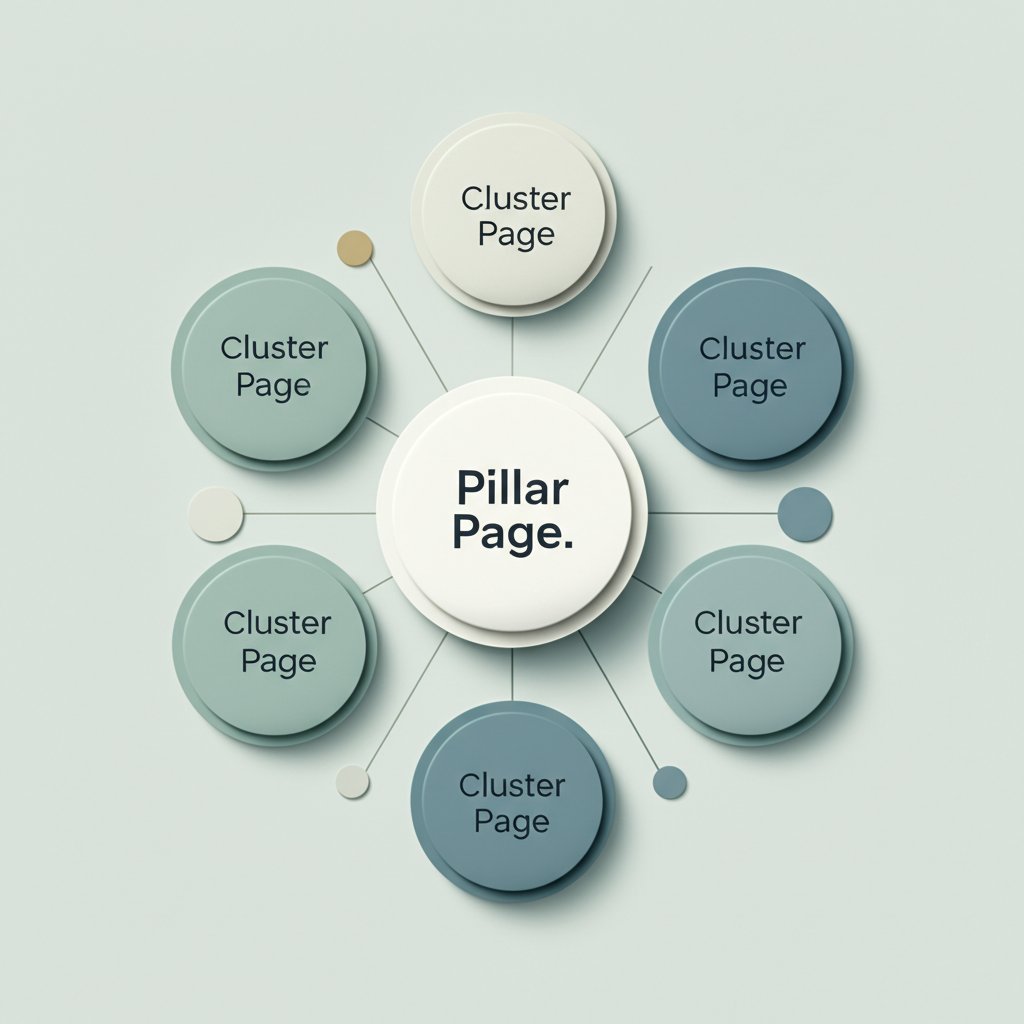TL;DR
An internal link is a hyperlink that connects one page of a website to another page on the same domain. These links are vital for SEO, as they help search engines like Google discover your content, understand your site's structure, and distribute ranking power across your pages. For users, internal links provide easy navigation to relevant information, improving their overall experience and time on site.
What Are Internal Links and Why Are They Crucial for SEO?
At its core, an internal link is simply a hyperlink from one page on your website to another page on your website. While the concept is simple, its impact on search engine optimization (SEO) and user experience is profound. Search engines use these links to find content, and users rely on them to navigate your site and discover information they need. Without a logical network of internal links, pages can become isolated islands, invisible to both search crawlers and visitors.
The importance of internal links can be broken down into three primary functions. First, they allow search engines to discover and index all the pages on your site. As Google's crawlers move from page to page, they follow these links to map out your website's architecture. Pages without any incoming internal links, known as "orphaned pages," are difficult for search engines to find and are unlikely to rank. Second, internal links help establish a clear information hierarchy. By linking more frequently to your most important pages, you signal to search engines that this content is valuable, creating a structure that guides both crawlers and users.
Finally, internal links are a primary mechanism for distributing "link equity" or ranking power throughout your site. Pages that have earned authority through high-quality external backlinks can pass some of that power to other pages via internal links. This process can help boost the visibility of newer or less-authoritative pages, improving their chances of ranking in search results. A clear HTML link is the standard way to implement this, as seen in this basic code sample:
<a href="/your-other-page/">Descriptive Anchor Text</a>
To clarify the concept, it's helpful to distinguish internal links from external links. While both are critical for a healthy SEO profile, they serve different purposes. An internal link keeps users and search engine crawlers within your domain, while an external link points to a page on a different website.
| Feature | Internal Links | External Links |
|---|---|---|
| Domain | Points to a page on the same domain. | Points to a page on a different domain. |
| Primary Purpose | Site navigation, establishing architecture, and distributing link equity. | Citing sources, providing additional resources, and building credibility. |
| SEO Impact | Improves crawlability, helps search engines understand content relationships, and spreads authority. | Boosts trustworthiness when linking to reputable sites; receiving them (backlinks) is a major ranking factor. |
Developing a Powerful Internal Linking Strategy
Moving beyond the 'what' and 'why', a successful internal linking plan requires a strategic approach. Instead of randomly adding links, your goal should be to build a logical and intentional site architecture that supports both your SEO goals and user needs. A well-organized site structure makes it easier for search engines to understand your content's context and for users to find the information they are looking for seamlessly.
A highly effective model for this is the "topic cluster" or "pillar page" strategy. This approach involves creating a central, comprehensive resource page (the pillar) that covers a broad topic in depth. This pillar page then links out to multiple, more specific articles (the clusters) that each explore a subtopic in greater detail. In turn, each cluster page links back to the main pillar page. This structure creates a tightly-knit web of related content that signals to search engines that you are an authority on the topic. For example, a pillar page on "Digital Marketing" might link to cluster pages on "SEO Basics," "Content Marketing," and "Social Media Advertising."
To implement this strategy, you must first identify your most important content—the pages you want to rank highest. These are your pillar pages. Once you have created your pillar and its supporting cluster content, the next step is to find strategic linking opportunities. One powerful technique is to leverage your site's most authoritative pages—those with the most external backlinks. You can identify these pages using tools like Google Search Console or Semrush's Backlink Analytics. By adding internal links from these high-authority pages to pages that need a boost, you can effectively pass link equity and improve their ranking potential.
For marketers looking to build out extensive topic clusters, scaling content creation is often a major hurdle. When generating a high volume of related articles to support your pillar pages, efficiency is key. For instance, when scaling content creation for these topic clusters, AI-powered tools like BlogSpark can help marketers and creators generate SEO-optimized articles efficiently, ensuring a steady stream of linkable assets.
Here are some practical steps to find and create new internal links:
- Use Google Search Operators: To find relevant pages on your own site, use the `site:` operator in Google search. For example, a search for `site:yourdomain.com "keyword"` will show all pages on your site that mention your target keyword, providing perfect opportunities for contextual links.
- Audit Existing Links: Use tools like Google Search Console to see your current internal linking structure. The "Links" report shows which pages are linked to the most. This can reveal if you are unintentionally sending authority to low-priority pages (like a contact page) instead of your cornerstone content.
- Support New Content: Whenever you publish a new blog post or page, make it a habit to go back to 2-3 older, relevant articles and add links pointing to your new content. This helps search engines discover it faster and prevents it from becoming an orphaned page.

Internal Linking Best Practices and Common Mistakes to Avoid
Executing a strong internal linking strategy requires attention to detail. Following best practices ensures that your links are useful for both users and search engines, while avoiding common mistakes can prevent you from inadvertently harming your site's SEO performance. The foundation of a good internal link is its anchor text—the visible, clickable text of the hyperlink. Good anchor text is descriptive and gives users and search engines a clear idea of what the linked page is about.
For example, using "our guide to SEO copywriting" is far more effective than a generic phrase like "click here." While it's acceptable to use keyword-rich anchor text for internal links, it's crucial to vary it naturally to avoid looking spammy. Using the same exact-match anchor text for two different destination pages can confuse search engines about which page is more relevant for that term. It's also important to understand the different types of internal links. Contextual links are those embedded within your body content, while navigational links appear in menus, footers, or sidebars. Both play a role in guiding users and distributing authority.
Beyond anchor text, several technical pitfalls can undermine your efforts. One of the most common issues is broken internal links, which lead to 404 error pages. These create a frustrating user experience and waste link equity. Another critical mistake is the incorrect use of the `rel="nofollow"` attribute. This tag tells search engines not to pass authority through a link. While it has its uses for external links, it should generally not be applied to internal links, as it prevents the flow of ranking power within your site.
Here is a list of common mistakes to avoid in your internal linking strategy:
- Orphaned Content: Creating pages with no incoming internal links makes them nearly impossible for search engines and users to find.
- Excessive Links on One Page: While there's no hard limit, packing a page with hundreds of links can dilute the value passed by each one and overwhelm users. A reasonable number, typically under 150, is a good guideline.
- Redirect Chains: Linking to a page that then redirects to another page (or multiple pages in a chain) slows down load times and can waste crawl budget. Always link directly to the final destination URL.
- Burying Important Pages: Pages that are many clicks away from the homepage are seen as less important by search engines. Aim to keep your most critical content within three clicks of the homepage.
A standard internal link in HTML is simple: <a href="/seo-copywriting-guide/">our guide to SEO copywriting</a>. A link with a nofollow attribute, which you should generally avoid for internal links, looks like this: <a href="/login/" rel="nofollow">Client Login</a>. Regularly auditing your site with tools like the Semrush Site Audit can help you identify and fix these issues before they impact your rankings.
Putting Your Internal Linking Plan into Action
Mastering internal linking is a continuous process of strategic planning, thoughtful execution, and regular maintenance. By building a logical site architecture centered around topic clusters, you create a powerful signal of authority for search engines and a clear path for users. Remember to prioritize your most important content, use descriptive anchor text, and consistently add links to new posts from relevant older ones. Avoiding common pitfalls like broken links, orphaned pages, and improper nofollow usage will ensure your efforts translate into tangible SEO gains. A well-executed internal linking strategy is not just a technical task; it's a fundamental part of creating a valuable and accessible website.

Frequently Asked Questions About Internal Links
1. How to find internal links?
There are several effective methods for finding internal links on your website. You can use Google Search Console's "Links" report, which provides a detailed overview of your internal link structure. Another simple method is using Google's `site:` search operator; for example, searching `site:yourwebsite.com` will show indexed pages, and you can add keywords to find specific linking opportunities. Additionally, SEO tools like Semrush or Moz offer site audit features that crawl your website and provide comprehensive reports on all internal links, including identifying issues like broken links or orphaned pages.
2. What are the different types of internal links?
Internal links can be categorized based on their placement and purpose. The main types include Navigational links, which are found in your site's main menu, footer, or sidebar and help users navigate the primary sections of your site. Contextual links (or in-text links) are placed within the body of your content and point to other relevant pages, providing additional context for users and search engines. Other types include Image links, where an image is hyperlinked to another page, and Breadcrumb links, which show a user's location within the site's hierarchy.




